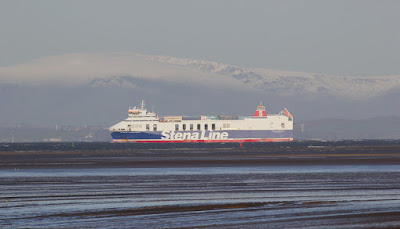Sue and I are in Lanzarote, Spain. Until we return home here are more photos of Lanzarote together with some of the birds met along the way.
At any time of year near perfect weather is more or less guaranteed in the Canary Islands. It gets windy sometimes and storms aren’t totally unknown, but at the moment it’s sun every day and temperatures hovering between 21- 23C. Whenever we go the attire is nearly always shorts and a tee shirt with a light jacket as backup for the cool of morning or evening.
All over the island of Lanzarote is the influence of the visionary artist, architect and environmentalist César Manrique who saved Lanzarote from the effects of rampant tourist development. His unusual creations emphasise the unique landscapes and geology of the island and are a major attraction to travellers.
Fondación César Manrique - Near Tahiche, Lanzarote.
Agave attenuata - Lanzarote
Lanzarote is rain-free for 95% of the year producing a near desert like environment in many places. It’s a landscape attractive to three speciality birds of the island, Houbara Bustard, Cream-coloured Courser and Stone Curlew but none of them are easy to find in the type of terrain they inhabit.
Berthelot’s Pipits are fairly common if sometimes difficult to pick out against the often grey, volcanic landscape. They are known to run around the feet of the tourists where there’s often a morsel or two of food, preferably the local queso tierno (tender cheese). Just occasionally I have seen Berthelot’s Pipits in the grounds of the hotel, once whilst lazing on a sunbed as the pipit walked along a nearby path. They also occur in nearby residential areas in amongst unfinished roads or housing developments, as do Desert Grey Shrikes, Linnets, Spanish Sparrows and Collared Doves.
A favourite drive is to head south along the coast to the village of El Golfo where we stop for a coffee or a snack followed by a walk along the headland where Yellow-legged Gulls abound but Lesser Black-backed Gulls are more common at migration time. There’s usually a Little Egret to be found amongst the rocks, together with small numbers of Common Sandpiper, Turnstone or Whimbrel.
Thank you everyone for continuing to visit Another Bird Blog in my absence. If you leave a comment I promise to get back to you as soon as possible via the hotel WiFi. Failing that I will return your message as soon as possible when back in England.
Houbara Bustard
Stone Curlew
Beware! - Bustards about
Watermelon - Lanzarote
Berthelot’s Pipits are fairly common if sometimes difficult to pick out against the often grey, volcanic landscape. They are known to run around the feet of the tourists where there’s often a morsel or two of food, preferably the local queso tierno (tender cheese). Just occasionally I have seen Berthelot’s Pipits in the grounds of the hotel, once whilst lazing on a sunbed as the pipit walked along a nearby path. They also occur in nearby residential areas in amongst unfinished roads or housing developments, as do Desert Grey Shrikes, Linnets, Spanish Sparrows and Collared Doves.
Berthelot's Pipit
A favourite drive is to head south along the coast to the village of El Golfo where we stop for a coffee or a snack followed by a walk along the headland where Yellow-legged Gulls abound but Lesser Black-backed Gulls are more common at migration time. There’s usually a Little Egret to be found amongst the rocks, together with small numbers of Common Sandpiper, Turnstone or Whimbrel.
El Golfo - Lanzarote
Yellow-legged Gull
Little Egret
Whimbrel
Turnstone
Thank you everyone for continuing to visit Another Bird Blog in my absence. If you leave a comment I promise to get back to you as soon as possible via the hotel WiFi. Failing that I will return your message as soon as possible when back in England.
































































.jpg)




.jpg)












